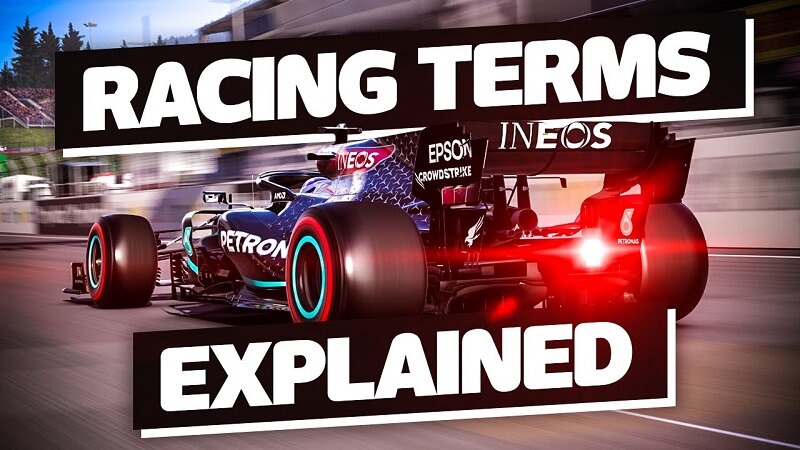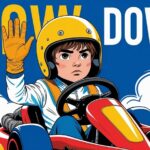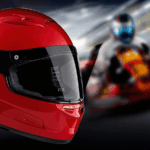Getting started in go-kart racing can feel like learning a new language. As someone who’s been teaching racing for over a decade, I’ve compiled this comprehensive dictionary of essential karting terms. Whether you’re heading to your first race or just want to understand what people are talking about in the pits, this guide will help you master the lingo!
Track Terminology
- Apex: The innermost point of a corner where your kart should be positioned for the fastest line.
- Breaking Point: The optimal location to begin braking before entering a corner.
- Chicane: A series of tight turns in alternating directions, designed to slow karts down.
- Entry Point: The spot where you begin your turn into a corner, typically from the outside of the track.
- Exit Point: The point where you complete your turn and begin accelerating.
- Racing Line: The optimal path around the track for the fastest possible lap time.
- Green Track: Track with minimal rubber buildup, offering less grip.
- Rubbered In: Track condition with optimal rubber buildup for maximum grip.
- Marbles: Small pieces of rubber off the racing line that reduce grip.
Driving Dynamics
- Drift: When the rear of the kart slides in a controlled manner through a corner.
- Oversteer: When the rear tires lose grip, causing the back of the kart to slide outward.
- Understeer: When the front tires lose grip, causing the kart to push toward the outside of the corner.
- Weight Transfer: The shift of the kart’s weight during cornering, acceleration, or braking.
- Trail Braking: Gradually releasing the brakes while entering a corner.
- Draft/Slipstream: Following closely behind another kart to reduce air resistance.
Technical Terms
- Camber: The angle of the wheels relative to the ground when viewed from the front or rear.
- Caster: The angle of the steering axis when viewed from the side.
- Chassis: The main frame of the go-kart to which all other components are attached.
- Power Band: The RPM range where the engine produces its optimal power.
- Sprocket: The toothed wheel that transfers power from the engine to the rear axle.
- Toe: The angle of the wheels when viewed from above (toe-in means wheels point inward, toe-out means wheels point outward).
Race Control Flags
- Black Flag: Exit the track immediately due to a rule violation or mechanical issue.
- Blue Flag: A faster kart is approaching; move over to let them pass.
- Checkered Flag: Race is finished.
- Green Flag: Race is starting or resuming.
- Red Flag: Race is stopped; slow down and return to pits.
- Yellow Flag: Caution; slow down, no passing allowed.
Race Procedures
- Formation Lap: The warm-up lap before a race where drivers maintain position and get tires up to temperature.
- Grid Position: Your assigned starting position on the track.
- Rolling Start: A race start where karts are already in motion when the green flag drops.
- Standing Start: A race start where karts begin from a stationary position.
- Qualifying: Timed session to determine starting positions for the race.
Setup and Maintenance
- Gear Ratio: The relationship between front and rear sprocket sizes that affects acceleration and top speed.
- Tire Compound: The rubber mixture used in tires (soft compounds offer more grip but wear faster).
- Tire Pressure: The amount of air pressure in the tires, typically measured in PSI or BAR.
- Brake Balance: The distribution of braking force between front and rear brakes.
Performance Metrics
- Grip Level: The amount of traction available between the tires and track surface.
- Lap Time: The time taken to complete one full circuit of the track.
- Top Speed: The maximum speed achieved on the straights.
- RPM: Revolutions per minute of the engine.
Safety Equipment
- HANS Device: Head and neck support system for crash protection.
- Neck Brace: Protective collar that limits head movement during impacts.
- Rib Protector: Protective gear worn under the race suit to prevent rib injuries.
- Race Suit: Fire-resistant clothing required for racing.
- Helmet: DOT or Snell approved head protection required for racing.
Conclusion
Keep this guide handy during your first few months at the track – you’ll be surprised how quickly these terms become second nature! Remember, every experienced racer started as a beginner, and understanding these terms is your first step toward becoming a more confident driver. Have questions about specific terms? Don’t hesitate to ask your local track officials or experienced racers for clarification!

Goran, an experienced go-kart racer, fuels GoKartLife.com with his passion and expertise. He offers valuable insights and tips for fellow enthusiasts, fostering the growth of the go-kart community. Join Goran at GoKartLife.com and immerse yourself in this exhilarating sport.
Last modified: February 16, 2025



